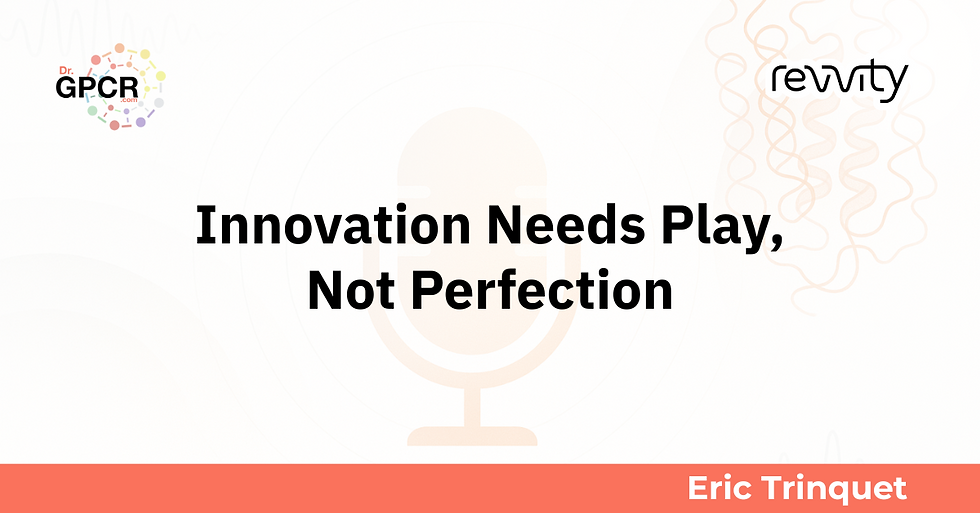How GPCR Collaboration Built an Innovation Engine
- Dr. GPCR Podcast

- 2 days ago
- 4 min read

When you walk into a typical academic lab, the boundaries are obvious: this PI’s corner, that group’s benches, their grants, their silos. But in Melbourne, a quiet experiment challenged that model — and it worked.
It wasn’t about whose lab it was. It was about what we could build together, recalls Michelle Halls.
What emerged wasn’t just another pharmacology group — it became a collaborative engine for GPCR discovery.
Turning Silos into Systems
The early 2000s were not kind to exploratory pharmacology. Funding models rewarded independence, not shared resources. Most labs operated like small, competing startups.
But at Monash Institute of Pharmaceutical Sciences, a different idea took root: what if collaboration wasn’t a last resort — but the operating system?
Michelle was part of a cohort that joined as postgrads in shared facilities, pooling reagents, ideas, and failures. Rather than carving out turf, they grew by designing around collective capacity.
No one had their own lab. That meant no one could build a fiefdom — and everyone had to talk.
Why This Matters
GPCR research demands integration — pharmacology, structural biology, signaling pathways, high-content imaging. A shared environment lowers friction between these specialties, making innovation structurally inevitable rather than aspirational.
This wasn’t just a clever idea on paper — it changed how science happened, day to day.
Engineering Collaboration: The Monash Lab Model
Traditional academic labs mirror feudal structures. The Monash model flipped that logic:
Shared infrastructure, not duplicated equipment
Centralized core facilities for receptor assays
PhD students trained across multiple techniques, not just one pipeline
Senior scientists embedded as “connectors” between programs
This design had a strategic effect: talent density increased, but so did interdisciplinary surface area — the number of conversations where breakthroughs could happen.
What Happens When Labs Stop Competing
Michelle credits this environment for catalyzing the GPCR signaling projects that shaped her early career.
For Early-Career Scientists
Don’t just pick a project — choose an ecosystem. The structure you train in often matters more than the experiment you start with.
The Power of GPCR Collaboration: Funding as a Force Multiplier
Collaboration sounds warm and fuzzy. But at Monash, it was also ruthlessly pragmatic.
At Monash, GPCR collaboration wasn’t just a cultural value — it was a deliberate strategy to build capacity, infrastructure, and momentum.
Instead of competing for multiple small grants, groups strategically pooled resources to build critical infrastructure once. That gave them capabilities others couldn’t match — from receptor biosensor platforms to live-cell imaging cores.
Shared funding gave us leverage. Suddenly, we could do experiments that individual labs just couldn’t afford.
This changed not just what got funded, but what was possible. The lab went from project-level thinking to platform-level strategy — a critical shift for GPCR biology, where complex systems need integrated tools.
What Changed After This Data
The pooled funding model turned the lab into a magnet: postdocs, visiting scientists, and industry partners wanted access to infrastructure they didn’t have. This wasn’t luck. It was designed.
Culture as Infrastructure: How Trust Was Built
Collaboration at this scale doesn’t happen by chance. It’s engineered.
The Monash team built rotational PhD cohorts — students cycled through multiple groups in their first year, gaining technical fluency and social trust. Senior postdocs acted as bridges, not gatekeepers. Weekly seminars were mandatory but lightweight, designed to connect rather than perform.
Michelle notes that the absence of individual ownership over physical space or specialized equipment removed the incentives to hoard knowledge.
Most GPCR discoveries aren’t blocked by science — they’re blocked by structures that make sharing hard. Monash turned structure itself into a collaboration tool.
Beyond the Bench: Leadership, Luck, and Leverage
Michelle is quick to note that none of this was perfectly planned. “There was a bit of luck,” she admits. Timing, leadership alignment, and a critical mass of motivated scientists converged.
But luck alone doesn’t sustain an ecosystem. What mattered was how leadership leveraged luck into durable structure — through funding strategies, talent pipelines, and open lab architecture.
This ecosystem outlasted individual PIs and became a GPCR innovation hub with global reach.
Mini Timeline: How the Model Evolved
Year 0 — Shared lab space established; PI buy-in secured
Year 2 — Core imaging and signaling platforms launched
Year 4 — Pooled grants fund expansion and training programs
Year 7 — International collaborations and industry partnerships take root
Today — Model continues to produce high-impact GPCR science
What the Rest of the Field Can Learn
The Monash model isn’t an Australian story. It’s a blueprint.
Biotech teams, CRO alliances, and academic consortia face the same challenge: how to align incentives to make collaboration not optional but structural. GPCR science thrives in complexity — meaning no single lab or company can do it alone.
This ecosystem design blueprint applies to biotech teams and academic consortia alike.
Michelle’s story shows what happens when an ecosystem is built deliberately, not accidentally. And for those shaping the next generation of GPCR discovery — from AI integration to next-gen biosensors — the lesson is clear: build together or build smaller.
Collaboration isn’t a feel-good story. It’s a competitive advantage.
🎧 Listen to the full episode: Leadership, Luck, and GPCR Signaling
🔓 Join Dr. GPCR Premium for deep dives, strategic tools, and behind-the-scenes conversations shaping the GPCR field.





Comments